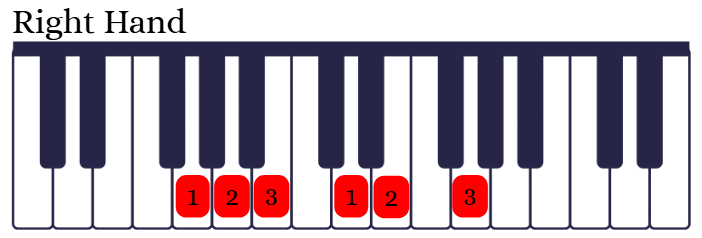top of page
Music Tuition Blog
Search


Identify the Scale. Level 1 Build. Focus 12
Encouraging students to engage with scales and triads in various pitches on the piano can significantly enhance their understanding and appreciation of music theory.
-
Sep 241 min read


Cultural Music Level 1 Build. Focus 11
By incorporating the rich musical traditions of China, Egypt, India, Indonesia, Peru, Persia, and Nigeria into the TQ Programme's Build Zone, we aim to broaden our understanding of global cultural expression.
-
Sep 2312 min read


Unlock Your Musical Creativity with the Pentatonic Scale
Have you ever sat at a piano or picked up an instrument, dreaming of creating your own melodies on the spot, only to feel paralysed by the sheer complexity of music?
The endless scales, chords, and rules can feel like an insurmountable wall, keeping your creative ideas locked away. It's a common frustration that stops many aspiring musicians before they even begin.
-
Sep 206 min read


One Minute Workout: The Benefits of Reading Music at Speed
As musicians, we often talk about the importance of practice, but what does that really mean? One of the most fundamental skills for any musician is the ability to read music fluently.
-
Sep 114 min read


The Transformative Benefits of Tonic Sol-Fa
Music education plays a crucial role in the personal growth of children. Tonic Sol-Fa stands out as an effective method to nurture musical understanding and creativity in elementary students. This blog post explores the various benefits of incorporating Tonic Sol-Fa into music education, offering valuable insights for parents and educators alike.
-
Aug 205 min read


Decoding Rhythmic Time Names in Elementary Music: A Guide for Students and Parents
Decoding French Time Names in Elementary Music: A Guide for Students and Parents
Learning music can feel like learning a new language, and in elementary music education, you might hear some unique terms, especially when it comes to rhythm.
-
Aug 186 min read


Unveiling 'Au Clair de la Lune': History, Melody, and First Sounds
"Au clair de la lune" is a beloved traditional French children's song, often translated as "By the light of the moon" or "In the moonlight." The straightforward lyrics narrate the tale of a man named Lubin, who requests a quill from his neighbor Pierrot to write a letter because his candle has extinguished. Pierrot, comfortably in bed, suggests that Lubin ask the neighbor instead.
-
Aug 124 min read


Scientific Pitch Notation
Imagine sitting at a piano. After a brief explanation of the letter names on the keyboard, your teacher asks you to play a D. A common response, especially from new students, is "Which one?" This simple question highlights a core challenge in music education: the need for a universally unambiguous way to identify a specific note. For this reason, we use Scientific Pitch Notation (SPN) at Stalybridge Music Academy.
-
Aug 123 min read


Pentatonic Scale?
The quickest way to play a pentatonic scale is on the black notes of a piano. The pentatonic scale is based on the five notes and is the foundational sound to many global cultures. The notes are found in not only early Western music but in the earliest music of China, Japan, south Asia, sub-Saharan Africa, and in the music of the indigenous peoples of the Americas. Popular folk songs that use the pentatonic scale include Ring-a-Ring of Roses, Mary Had a Little Lamb & Rain, Ra
-
Aug 83 min read


What is an Etude?
An étude is a musical composition, usually short, designed to improve a musician's technical skills on a particular instrument. It's essentially a musical exercise, often with a focus on a specific technique like scales, arpeggios, or finger dexterity. While originally conceived for practice, many études have become recognised as concert pieces, appreciated for their musicality as well as their technical demands.
-
Aug 83 min read


Exploring Edvard Grieg's "Morning"
"Morning" is one of the most famous pieces by the Norwegian composer Edvard Grieg (1843-1907). It is part of his incidental music for Henrik Ibsen's play Peer Gynt, first performed in 1876. The music is played during Act IV, Scene 1, as the sun rises over the desert in North Africa.
-
Jul 114 min read


Student Question: Why Is It Called a Triad?
This is a great question! To answer it, we need to journey through the fascinating history of musical understanding, beginning with ancient discoveries and moving through the Renaissance to the Baroque era.
-
Jul 116 min read


Suo Gân - A Welsh Lullaby
Suo Gan is a traditional Welsh lullaby that has captured the hearts of many with its soothing melody and poignant lyrics. Often sung to children at bedtime, this lullaby reflects the deep cultural heritage of Wales and showcases the beauty of the Welsh language.
-
Apr 185 min read


Pattern 1: Level 1 Find TQ Piano
The Triquetrae Programme: Three Note Patterns book introduces a pattern-recognition system designed to improve sight-reading ability. This m
-
Apr 66 min read
bottom of page
